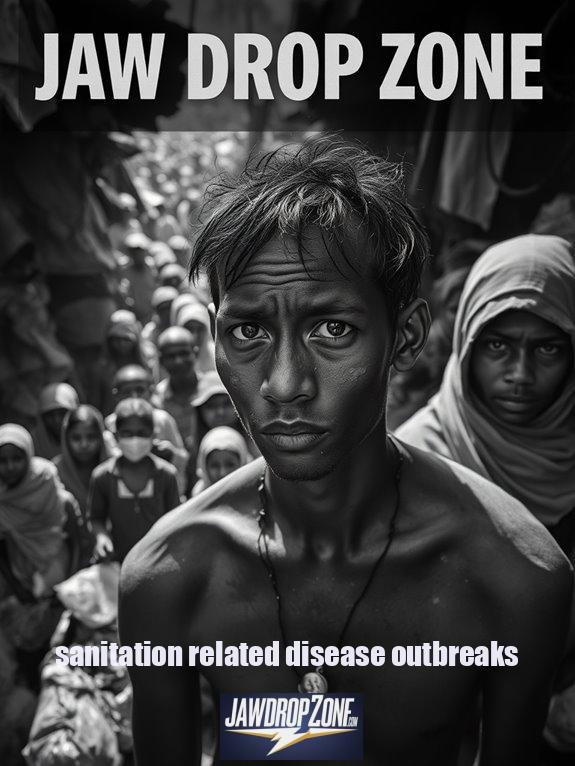When sanitation's a no-show, disease loves to crash the party. We're talking cholera, typhoid fever, and even polio! Can you believe it? These nasties thrive in murky waters where sewage takes a backseat. It's not just inconvenient; it's deadly—especially for kids under five. Envision living in a world where your basic right to clean water is a luxury. It's shocking, right? Stick around, and you'll discover more jaw-dropping truths about this sneaky sanitation crisis.
Quick Takeaways
- Cholera thrives in environments lacking proper sanitation, leading to severe outbreaks and high mortality rates.
- Typhoid fever, caused by *Salmonella typhi*, spreads more easily due to inadequate sanitation and increasing antibiotic resistance.
- Diarrheal diseases, a leading cause of death in children under five, are exacerbated by poor sanitation.
- Neglected tropical diseases proliferate in unsanitary conditions, affecting the health of vulnerable populations.
- Infectious diseases like polio and hepatitis A are facilitated by the absence of effective sanitation systems.
The Hidden Dangers of Poor Sanitation

Envision walking through a world where the very water you drink could be a silent assassin, lurking with deadly pathogens. Sounds dramatic, right? But it's a reality for millions. Without proper sanitation systems, cholera thrives, waiting to strike the unsuspecting.
Picture a loved one falling ill, all because a simple glass of water wasn't safe. That's the grim fate faced by many, where cholera prevention isn't just a suggestion but an urgent necessity.
And let's not forget typhoid fever, a crafty villain fueled by poor sanitation. The culprit? *Salmonella typhi*. This sneaky bacterium is getting tougher, too, as antibiotic resistance grows.
So, when we chat about freedom, are we truly free if every sip of water could lead to a hospital visit? It's infuriating!
Now, consider this: diarrhea is one of the leading killers of children under five. It's not just a minor inconvenience; it's a life-or-death situation that's exacerbated by inadequate sanitation. Universal access to WASH can significantly reduce the global disease burden and save countless lives.
Do we really accept that?
Without proper sanitation, we open the floodgates for neglected tropical diseases, polio, and hepatitis A. Each disease plays its part in an orchestra of health crises, leaving communities in despair.
But here's the kicker: this isn't just about health; it's about dignity. Women and girls are disproportionately bearing the brunt of this crisis, often sacrificing their education and freedom.
Lack of Sewage Disposal Methods

When you think about it, the absence of proper sewage disposal methods isn't just a minor inconvenience; it's a silent crisis that's wreaking havoc on countless lives. Inadequate sanitation leads to disease outbreaks like cholera, making clean water a rarity instead of a right. Isn't it shocking that millions still face open defecation? In ancient urban centers, the challenges of waste disposal were significant contributors to the spread of infectious diseases. Let's fight for freedom from these preventable horrors together!
References
- https://www.cdc.gov/global-water-sanitation-hygiene/about/index.html
- https://www.cdc.gov/global-water-sanitation-hygiene/about/about-global-sanitation.html
- https://www.in.gov/health/eph/onsite-sewage-systems-program/diseases-involving-sewage/
- https://www.paho.org/en/topics/water-and-sanitation
- https://www.who.int/data/gho/data/themes/topics/water-sanitation-and-hygiene-burden-of-disease
- https://www.oxfam.org/en/what-we-do/issues/water-and-sanitation



